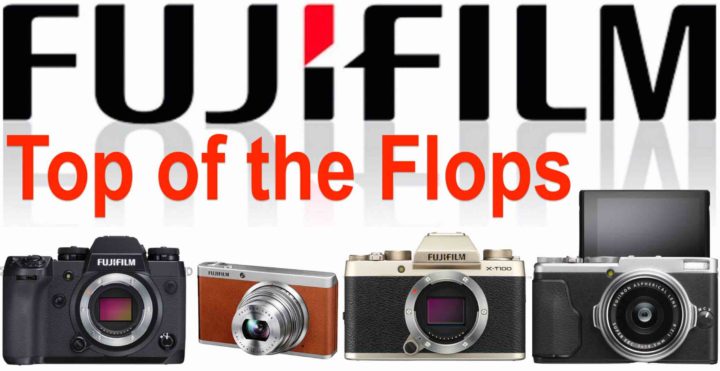NEW GUEST POST FEATURE
Write Your Articles Directly On FujiRumors!
guest post by Boris Chan – 500px
Hoi Patrick, hoi everyone.
This is Boris, a newbie in this Fuji wonderland. Unlike many of you guys, I am by no means a professional photographer- not paid, not freelanced, nothing. Currently I’m doing photography as a hobby, but this pastime is getting a little bit pricey, thanks to my obsession with faux-rangefinder cameras (more on the term “faux-rangefinder later). For goodness sake it’s not a genuine German rangefinder camera. Gimme one and I’ll buy all the compatible lenses till I become bankrupt…
It has been two years since I bought the Zeiss Touit Duo during “the crazy sale” for $900 – a deal that was too good to be true and nothing but irresistible. To be honest, it was a reckless decision because back then I didn’t even have an X-camera to go with those lenses (or more accurately, I didn’t know which X-body to buy since they all have the same 16MP sensor). Luckily there was a XE2 – XF 18mm F2 bundle and I snatched it up (not in a sense that I didn’t pay) immediately without the slightest hesitation. And that was how I hopped on the Fuji X bandwagon.
In this article, I am not going to bore you all with the specifications, scientific test charts and comparisons because you guys either know it better than I do or can read it on any review page, so I will keep this article very subjective and personal.
My first impression with the XE2 wasn’t all roses.
The build quality surprised me – the silver paint on the top plate started to chip after a week of light use, and what’s beneath is not the attractive lustre of brass as you may have expected to see in such a Leica-like camera, instead the black base paint reared its ugly head. No wonder why some confused the magnesium top plate with a plastic one. Based on my past experience with Panasonic GF1, the paint should hold up quite well, unfortunately that wasn’t the case for the Fuji.
Secondly, the autofocus is quirky. It hunts a lot, it is slow, and when it doesn’t hesitate it confidently focuses on the background rather than the subject. Whoever designed the original autofocus algorithm deserves to be spanked if not sacked. Again, that wasn’t something that I have anticipated in a highly acclaimed premium camera system, as a result I have missed focus in 20-30% of the photos I took in the first week.
Another problem is the stated ISO. I cannot get a correctly exposed image with the Sunny 16 rule, images often appear to be underexposed by one stop.
And then the distance scale – it is not as accurate as it looks, especially when coupled with the Zeiss 32mm.
If there were a 14-day return policy in Hong Kong, I would have exchanged it for a Pansonic GX7, but there isn’t any. As you could have guessed right now, I didn’t sell it. After all, Kaizen is all above constant improvements, right?
During these two years, I have taken this camera on two trips, first to the West Coast, and then to Amsterdam and the UK. And during these two years I am getting used to most of the quirks, which can be partially attributed to the new firmware improvements, and partially to the overall shooting experience.
At first, I didn’t quite get why people compared this digital camera to an old school rangefinder film camera a la Leica M – to me it doesn’t feel like a rangefinder at all. This is a faux-rangefinder camera. It doesn’t have a rangefinder. It doesn’t even have an optical viewfinder. With a liveview EVF, I can preview what the final image will look like with my exposure settings and film simulations (yes, I am a lazy JPEG shooter); and since there is no optical viewfinder to show the world beyond my framelines, I can frame as precisely as I can with a SLR camera. By the way, let’s not forget this camera has autofocus, which again isn’t something you can find on an old school rangefinder with a rare exception of the late Contax G1 &2. To keep things short, the more I shoot, the more I like this camera.
Okay, let’s talk about the image quality. Blimey, that’s where this camera shines. Punchy & contrasty? Checked. White balance? Quite accurate. Saturation? Slightly too saturated but in a pleasant way. Grains? Absolutely bonkers, I swear there’s real film behind that lens. Sharpness? Well, that depends on the lens, right?
Despite all that rubbish I hear about the 18mm F2, it is my favourite lens. It may not be as sharp as the Zeiss lenses, but mind you it weighs half as much, it focuses twice as fast, and just these two points alone make this a must-have for any X shooter. And despite the wide angle distortion, it’s also a great environmental portrait lens thanks to the smooth, characterless bokeh. If you’re looking for an art lens, this isn’t it; but if you want a wide reportage lens, this is it, until the 23mm F2 comes out.

Sharp, contrasty, and having quite a bit of extra headroom to crop, I see no excuse to pair this camera up with a zoom lens.
With firmware 3.0 came classic chrome film simulation, which has been my favourite and default film for a year or so.

Push READ MORE




